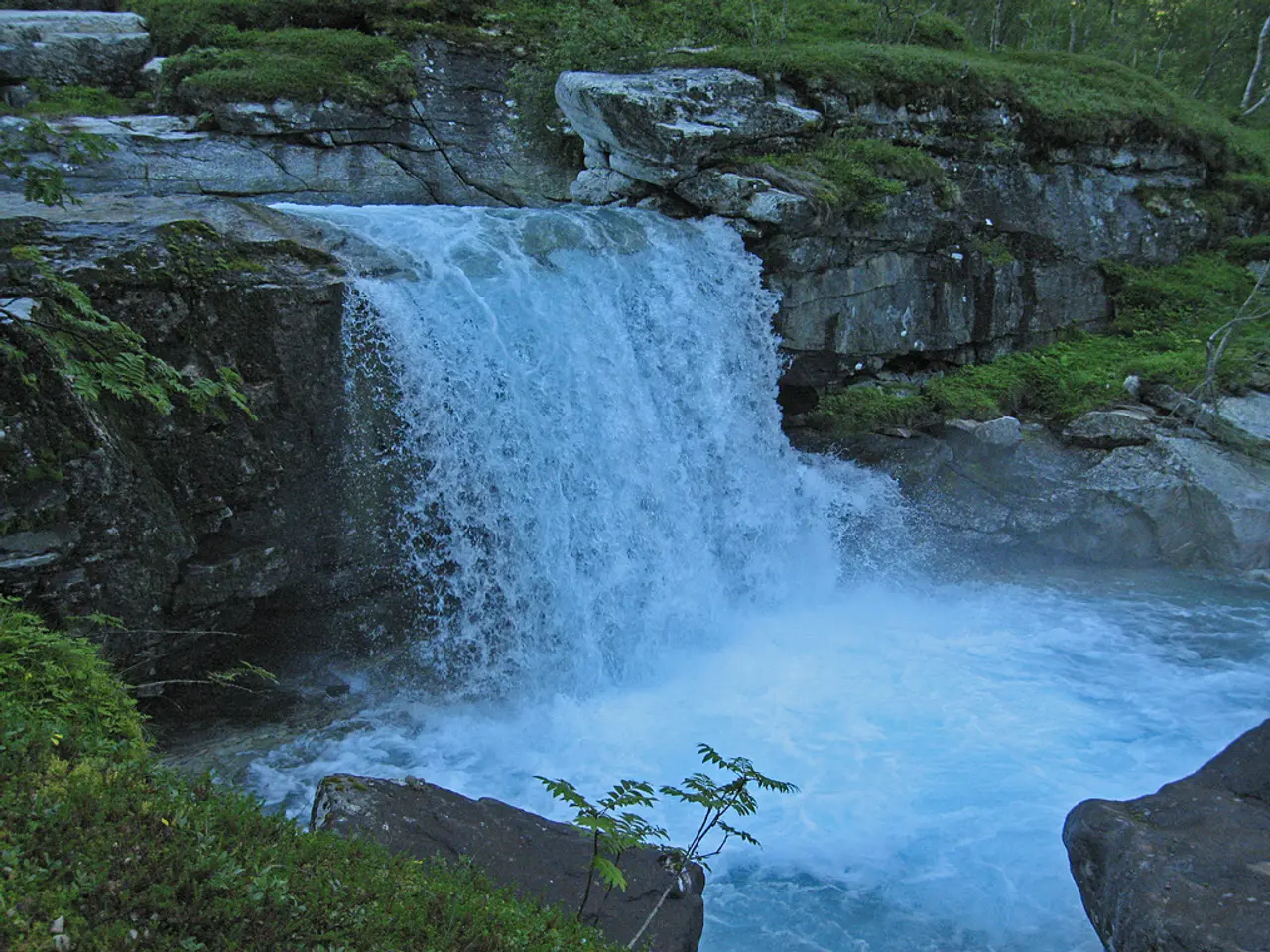efflorescent Rain Gardens: Aesthetically Pleasing Method for Managing Runoff
Rain gardens, a special part of a yard that catches and absorbs rainwater, are becoming a key strategy in climate-resilient design. These gardens, which mimic natural hydrological processes, are not just beautiful but also crucial for climate-resilient communities and water protection.
In San Diego's drylands, where catching rainwater is key due to the area's low rainfall, rain gardens play an essential role. They can absorb at least 30% more water than a traditional lawn, helping prevent flooding and recharging groundwater.
Starting a rain garden installation means first preparing the site. This involves removing any plants, like grass and weeds, from the area. The garden's size should match the area it drains, usually 10-15% of the impervious surface. The basin's depth depends on the garden's size and the soil considerations and drainage of the area.
When designing a rain garden, consider the size based on the catchment volume for a specific rain amount. Native plants in rain gardens are good for the environment and easy to care for. They fit the local climate and soil, so they don't need much water or care. Local extension services and native plant societies can give advice on plants for your area.
The USDA Natural Resources Conservation Service offers design manuals and success stories for DIY rain gardens. The Environmental Protection Agency has a guide on rain gardens that talks about planning and building them. It covers site assessment, garden size, and plant selection. The Rain Garden Network also has guides for plant selection, listing native species for different areas and stormwater management needs.
If the soil doesn't drain well, it might need to be changed. Adding a mix of soil and compost can help. The Dungeness River Nature Center suggests plants like Blue flag iris, Joe Pye weed, and Sneezeweed for wet spots in a rain garden.
By incorporating a rain garden into your landscape, you can work towards more sustainable and climate-resilient design. Together, we can build sustainable, climate-resilient communities. Join environmental stewardship efforts in your area.
The Dungeness River Nature Center's rain garden aimed to manage stormwater and educate visitors. It also aimed to improve wildlife habitat, especially for pollinators. The search results do not contain information about the organization that redesigned the garden near the Dungeness River Nature Center using rain garden technology. However, the Dungeness River Nature Center might have projects or volunteer spots for those interested in rain gardens.
Rain gardens capture and filter rainwater, which recharges groundwater and reduces flooding risks. They also protect nearby waterways from pollution. A rain garden that is only 10-20% of the size of a roof can absorb all the runoff from it. Adding a rain garden to your yard helps manage stormwater and cuts down on pollution.
Incorporating a rain garden into your landscape is a simple yet powerful step. It's a move towards more sustainable and climate-resilient design. Rain gardens are a win-win for both people and the environment. They manage stormwater runoff, recharge groundwater, and create beautiful, wildlife-friendly habitats - all while enhancing the sustainability of our landscapes.








